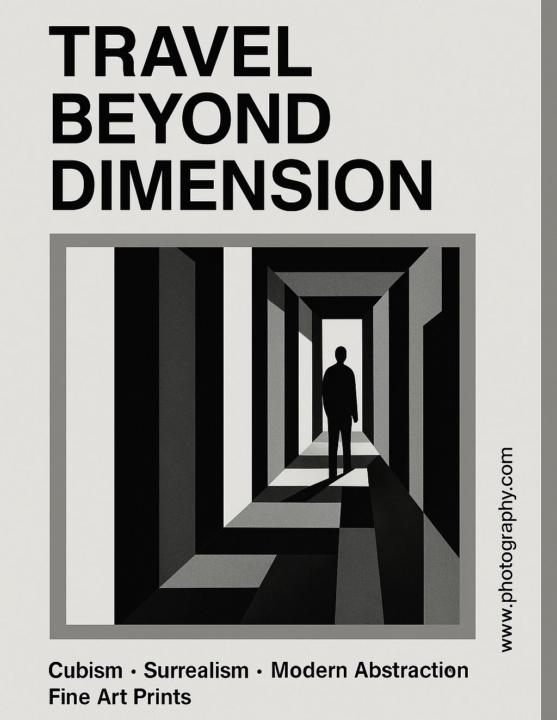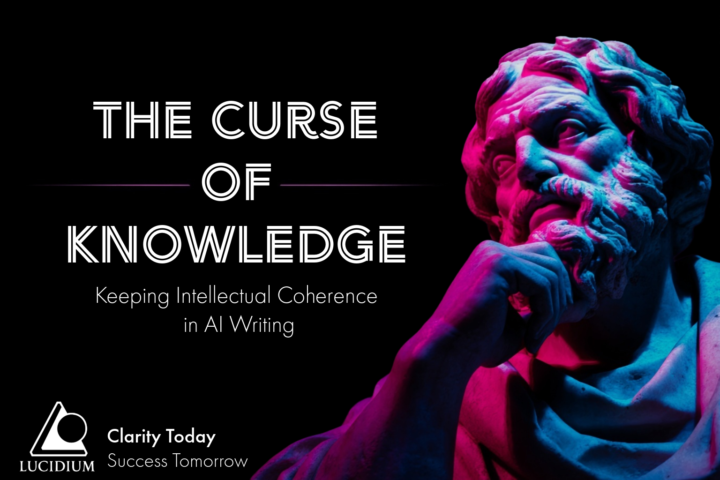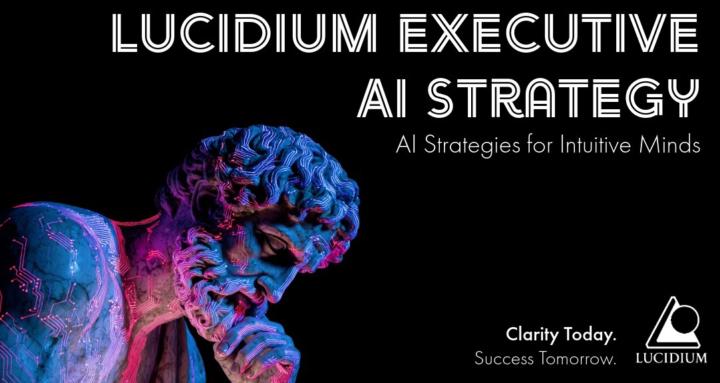
Write something
Where You Aim, Your Ads Follow: Why Most Prompts Fail and How To Fix Them
Have you taken a moment to consider the effect of your advertising, not just the result? Most people jump straight into tactics such as: “Make me an ad.” “Give me a strategy.” Or “Write me a hook.” But without understanding the psychology behind what you’re aiming for, AI will only give you the safest, most predictable version of your industry. It’s not wrong, just generic and forgettable. To remedy this, ask AI these questions: “Who is my audience?” “What are their pain points?” And “What do they actually need my product to do for them?” For some, it’s status. For others, convenience, practicality, or control. Everyone carries a romanticized version of their life where that thing already exists. Your product should be the step that gets them closer to it — the thing that shifts how they feel. This is a part of something called “value proposition”: A highlight of the value your product/service brings, and why potential customers should choose you over your competitors. When you understand that, you actually start speaking to people instead of at them. And that’s when they finally pay attention. ——— Do you practice value proposition when brainstorming with AI? Have you found that it improves your conversion rates?
0
0

AI Graphic Design is Worthwhile Now
I’ve been a skeptic of AI graphic design for a very long time. I’d only ever seen terrible, generic designs that weren’t worth the time it took to make them. Things like incoherent imagery, deformed letters, and dull, boring fonts that didn’t match the aesthetic. However, over the last few weeks, I’ve noticed something interesting: people’s AI-generated graphics are suddenly looking a lot better. - The text is clearer and correctly written - The visuals are eye-catching - The styles feel intentional and consistent - The fonts are more lively and match the style So I decided to experiment and see if I could quickly create flyers that came close enough to my own level that I’d feel good sharing them publicly. These have a bit of an AI-feel to it, so I’d still rate my own flyers as better, but the designs I’ve made are more than good enough for every day social media posts. So far, they’ve converted just as well as my own graphics. Example: Below is a fast, simple flyer I made for a mock photography studio. - It has a cohesive style that fits the industry - The cubist graphic is balanced and purposeful - The text is clean, well-written, and formatted correctly - The color palette is spot-on If this were my real photography studio, I’d feel comfortable posting it on my pages, Nextdoor, or in local Facebook groups. The workflow: To make this image, I went over a few things with ChatGPT. - My idea for the main art piece (to make sure the AI fully understood the visual direction) - The ideal audience for a minimalist, cubist art style - A few examples of the format I wanted(ask for recommendations if you're unsure). - Text that is relatable or inspiring to the audience. After less than 15 minutes and just three mockups, ChatGPT generated one that genuinely impressed me. It was something that needed minimal editing and looked fully professional. Here’s my chat for reference: https://chatgpt.com/share/692fd41f-91d0-8007-8d76-33500e2133ac
0
0

The Gap Between You, AI, and Your Audience
Have you noticed the recent influx of independent research posts that sound smart, but somehow miss their own main idea? Almost all of it is written by AI, and the reason it falls apart is simple. Let’s talk about it. ⸻ The real problem: When people research with AI, they fill in a lot of details with their own knowledge. They know the topic, they understand the conversation, and they assume the final write-up is complete. But the audience didn’t see any of that. They didn’t sit through the whole chat, and they don’t have the background knowledge you built together with AI. This is the same issue I saw constantly when I taught in the public school system. Students would write research papers that were technically correct, but they left out the middle steps: the parts someone new needed in order to understand the point. The student understood their own writing perfectly… but their audience didn’t. AI writing works the exact same way. So the final result is a paper that technically “makes sense” but is missing the pieces that make it coherent to someone who wasn’t there. ⸻ The name for this: The Curse of Knowledge Essentially, once you understand something well, it becomes hard to remember what it was like to not understand it. So you skip the basics without realizing it. AI inherits this problem from you. If you never typed the background knowledge out, the AI can’t put it in the final article, and the finished product feels incomplete. ⸻ Why this matters and how to fix it: A lot of people are trying to teach, explain ideas, or share research online. But if your audience is missing half the foundation, your message won’t land, no matter how good your insights are Here’s what to do: A. Start with your main idea and goals Discuss with AI: • What the paper is about • Who the audience is • What you want the reader to learn B. Never accept the first draft, edit it and add missing pieces. Ask questions like: • “What would a beginner not understand here?” • “What background information is missing?
0
0

Validating your product before scaling — and why it’s important.
I came across a post on Facebook today where the poster had an unsuccessful Etsy shop and was burnt out making little to no sales or profit. After reading their post I realized a couple of things: 1. They scaled before they validated their products. They are over $1,000 in the hole because they bought a ton of equipment before they tested or researched their market. 2. They do not have a marketing plan or brand identity. 3. They have received sales, meaning there is demand, but lack the mindset to take advantage of it. Here was my advice to them: “This is common for the start of a business. Most businesses don't see profit in the first 2-5 years. It's a really slow grind, especially as an artist in a saturated market. The most important thing is consistency. Don't scale any further, you need to validate your current products. Making new patterns is fine, but don't focus on it. You have enough for now. Make sure you post on social media several times a week(consistency > quality), and maybe do some cold sales via email and DMs, and product plugs in discussions if you're brave enough. The fact that you have some sales tells me that there is demand for your products and that's a great place to be. One major thing I see businesses struggle with in their first year is they do not know their audience and their pain points. I'd ask the following questions: 1. What is my art style? 2. Who would be interested in my art style? 3. What are common applications for said style? 4. What problem could my audience have that I can solve with my product/service? 5. How can I implement and market that solution? What I'd do is give ChatGPT the link to your shop and ask it these 5 questions. Then have it locate 3-4 other shops with high sales within your market and breakdown what they are doing that is driving success. From that you can create a brand identity, a marketing plan, and a 1-year growth plan. Once your shift your mindset into a more business-focused one, you'll likely see more success.”

1 Prompt = 1 Subject. Don't confuse the AI.
AI is incredibly smart... but deep down, it's really not. All it's doing is predicting what you want to hear based on what you said or typed, so don't confuse it! Something that I do often is ask ChatGPT more than one thing in a single prompt because I have too many thoughts at once. It's tempting because it does work... sometimes. Most of the time, if you ask for too many things, the AI will ignore one of them, or use less energy to answer both, leading to unhelpful or incomplete answers. It doesn’t know which is the most important thing to focus on. Remember to be INTENTIONAL and FOCUSED with your prompts. So what happens when you have two thoughts simultaneously? What should you do? You could give your AI this instruction: "I sometimes give you more than one thought in the same message, but I usually only want you to focus on one of them. Whenever you see that happening, pause and say: “I see two (or more) directions here: [list them briefly]. Which do you want me to focus on?” Don’t try to guess. Always confirm before going deep on either." But remember: the longer a chat goes on, the more AI forgets instructions. Eventually it stops following them. You need to shape your prompting habits to work around its faults. AI doesn't know your priorities — it just picks whatever is easiest to answer, which is often not what you needed. So, what is the solution? - Prioritize in your head first. Just like picking a place to eat with your partner, you already know what you want, and you are secretly hoping they'd pick the same place. Prioritizing your subjects for AI is the same. Ask yourself "What do I actually want the AI to respond to?" - Narrow mid-stream. If you've typed a long prompt with multiple topics, you don’t have to delete it. Just add a sentence that steers it: "I want you to focus on X, not Y." - Use sequencing. Break it up naturally: “First, tell me about X. Then let’s do Y.” Mention both things up-front so the AI sees your thought process, but show the order of importance. Often the context of Y helps it give a better answer for X — even though it’s not focusing on Y. - Start a new chat. Do you need answers to both things right away? Don’t force AI to do both at once. Its goal is to use as little energy as possible, so it won’t give you a good answer for more than one thing in the same prompt. If you open a new chat and carry over the key context, you’ll get a clearer, more complete answer than if you tried to push both at once.
1-15 of 15
powered by

skool.com/unlock-the-machine-mind-8635
Learn to use AI strategically like an executive—build clarity, systems, and confidence in every decision.
Suggested communities
Powered by
